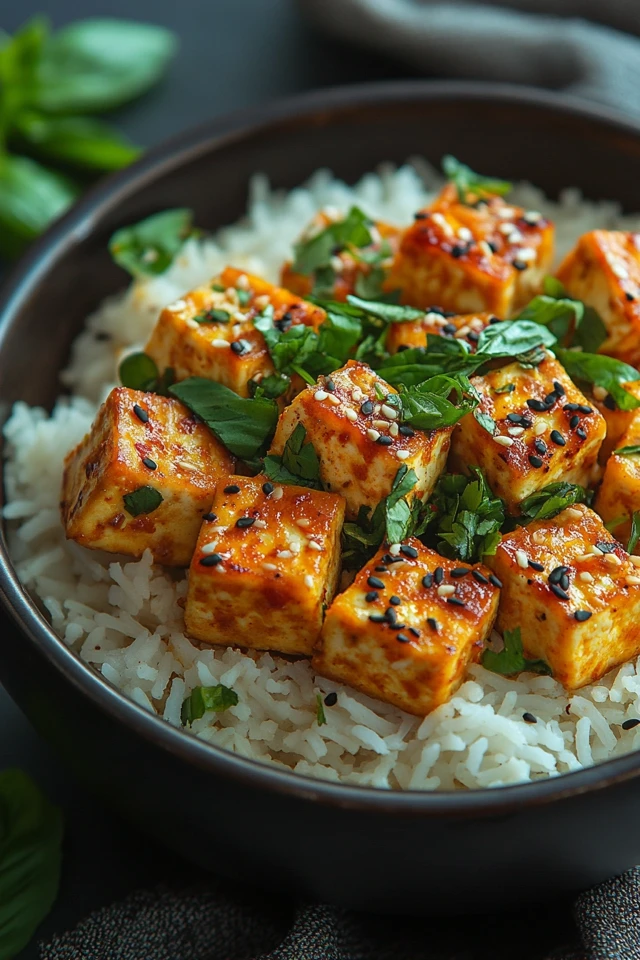Introduction
Immerse yourself in the vibrant and tantalizing flavors of Vegan Thai Green Curry: Spicy & Aromatic! This exquisite dish captures the essence of traditional Thai cuisine, blending the fiery heat of green chilies with the fragrant aroma of fresh herbs and spices. Perfect for weeknight dinners, festive gatherings, or a comforting meal any time of the year, this vegan green curry promises to delight your taste buds and nourish your body with wholesome, plant-based goodness.
Crafted entirely from fresh vegetables, protein-rich tofu, and a medley of aromatic spices, this green curry is not only delicious but also packed with essential nutrients. The creamy coconut milk base provides a luscious texture that perfectly complements the crisp vegetables and tender tofu, creating a harmonious balance of flavors and textures. In this comprehensive guide, we’ll explore the benefits of vegan Thai green curry, provide a detailed recipe, and share tips and variations to customize it to your liking. Let’s embark on a culinary journey to create a spicy and aromatic vegan Thai green curry that embodies the best of wholesome and flavorful Asian-inspired cuisine!
Why Choose Vegan Thai Green Curry?
Opting for Vegan Thai Green Curry offers a multitude of benefits that cater to health, ethical, and culinary preferences. Here’s why this dish should become a staple in your kitchen:
Health-Conscious Choice
- Nutrient-Rich: Packed with fresh vegetables like bell peppers, zucchini, and spinach, along with protein-rich tofu, this curry provides a balanced mix of vitamins, minerals, and antioxidants essential for overall health.
- Heart-Healthy Fats: The use of coconut milk introduces healthy saturated fats that are beneficial in moderation for heart health and satiety.
- Low in Cholesterol: Being plant-based, this curry is naturally cholesterol-free, supporting cardiovascular health.
- High in Fiber: Vegetables and legumes contribute to a high fiber content, promoting digestive health and sustained energy levels.
Ethical and Sustainable
- Plant-Based: Embracing a plant-based meal reduces your carbon footprint and supports sustainable eating practices, benefiting both your health and the environment.
- Cruelty-Free: Free from animal products, this curry aligns with compassionate lifestyle choices and ethical food preferences.
Versatile and Customizable
- Flavor Adjustments: Easily tweak the spiciness by adjusting the number of green chilies or adding a dash of hot sauce to suit your taste preferences.
- Ingredient Flexibility: Substitute or add various vegetables, proteins, or herbs based on availability and personal preferences, making the recipe adaptable to various dietary needs.
- Serving Options: Serve as a standalone meal with steamed rice, over noodles, or alongside other dishes for a complete and satisfying meal.
Delicious and Satisfying
- Balanced Flavors: The combination of spicy green curry paste, creamy coconut milk, and fresh vegetables creates a balanced and satisfying flavor profile that delights the palate.
- Aromatic Presentation: A well-prepared green curry not only tastes amazing but also fills your kitchen with enticing aromas, enhancing the overall dining experience.
Ingredients
Creating Vegan Thai Green Curry involves a harmonious blend of fresh vegetables, protein-rich tofu, aromatic herbs, and a creamy coconut milk base. Here’s what you’ll need:
For the Curry
- Firm Tofu: 1 block (14 oz), pressed and cubed
- Coconut Oil or Vegetable Oil: 2 tablespoons
- Thai Green Curry Paste: 3 tablespoons (ensure it’s vegan)
- Coconut Milk: 2 cans (14 oz each, full-fat for creaminess)
- Vegetable Broth: 1 cup
- Bell Peppers: 2 large (different colors), sliced into strips
- Zucchini: 2 medium, sliced into half-moons
- Carrots: 2 large, thinly sliced
- Snow Peas: 1 cup
- Spinach or Kale: 2 cups, chopped
- Fresh Basil Leaves: 1/2 cup, torn
- Fresh Cilantro: 1/4 cup, chopped
- Lime Juice: 2 tablespoons
- Soy Sauce or Tamari: 2 tablespoons (for gluten-free)
- Brown Sugar or Maple Syrup: 1 tablespoon
- Salt: To taste
- Black Pepper: To taste
For the Soy Dipping Sauce (Optional)
- Soy Sauce or Tamari: 1/4 cup
- Rice Vinegar: 2 tablespoons
- Sesame Oil: 1 teaspoon
- Maple Syrup or Agave Nectar: 1 tablespoon
- Garlic: 1 clove, minced
- Ginger: 1 teaspoon, freshly grated
- Red Pepper Flakes: 1/4 teaspoon (optional for heat)
- Green Onions: 2, finely chopped
- Sesame Seeds: 1 teaspoon, toasted
Ingredient Breakdown
- Firm Tofu: Provides a hearty protein source, offering a satisfying texture that absorbs the curry flavors beautifully.
- Thai Green Curry Paste: The foundation of the curry’s flavor, blending green chilies, herbs, and spices to create a spicy and aromatic base.
- Coconut Milk: Adds creaminess and richness, balancing the heat of the curry paste with its natural sweetness.
- Fresh Vegetables: Bell peppers, zucchini, carrots, and snow peas contribute a variety of textures and vibrant colors, enhancing the nutritional value and visual appeal.
- Herbs: Fresh basil and cilantro infuse the curry with aromatic notes, elevating the overall flavor profile.
- Soy Dipping Sauce Ingredients: Create a tangy and savory accompaniment that complements the curry, adding layers of flavor with each dip.
Instructions
Preparing Vegan Thai Green Curry is straightforward and yields a delicious, nutritious meal perfect for any occasion. Follow these step-by-step instructions to create a spicy and aromatic green curry in about 45 minutes.
Step 1: Prepare the Tofu
- Press the Tofu:
- Remove excess moisture from the tofu by pressing it. Wrap the tofu block in a clean kitchen towel and place a heavy object on top for at least 15 minutes. This step ensures the tofu absorbs the flavors better.
- Cube the Tofu:
- Once pressed, cut the tofu into bite-sized cubes. Set aside.
Step 2: Sauté the Curry Paste
- Heat the Oil:
- In a large skillet or wok, heat 2 tablespoons of coconut oil or vegetable oil over medium heat.
- Add Curry Paste:
- Add 3 tablespoons of Thai green curry paste to the heated oil. Sauté for 1-2 minutes, stirring constantly, until the paste becomes fragrant and slightly darkens in color.
Step 3: Cook the Tofu
- Add Tofu to the Pan:
- Gently add the cubed tofu to the skillet, stirring to coat the tofu evenly with the curry paste.
- Cook the Tofu:
- Cook for 3-4 minutes, allowing the tofu to absorb the curry flavors. Avoid stirring too vigorously to prevent the tofu from breaking apart.
Step 4: Add Liquids and Vegetables
- Pour in Coconut Milk and Broth:
- Add 2 cans of coconut milk and 1 cup of vegetable broth to the skillet. Stir to combine thoroughly.
- Incorporate Soy Sauce and Sweetener:
- Add 2 tablespoons of soy sauce or tamari and 1 tablespoon of brown sugar or maple syrup. Stir well to dissolve the sugar.
- Bring to a Simmer:
- Increase the heat to medium-high and bring the mixture to a gentle simmer.
- Add Vegetables:
- Once simmering, add the sliced bell peppers, zucchini, carrots, and snow peas. Stir to distribute the vegetables evenly throughout the curry.
Step 5: Simmer the Curry
- Cook Until Vegetables are Tender:
- Reduce the heat to medium and let the curry simmer for about 15-20 minutes, or until the vegetables are tender but still crisp.
- Add Greens and Herbs:
- Stir in the chopped spinach or kale, torn basil leaves, and chopped cilantro. Cook for an additional 2-3 minutes until the greens are wilted.
- Finish with Lime Juice:
- Remove the skillet from heat and stir in 2 tablespoons of fresh lime juice. Adjust seasoning with salt and black pepper to taste.
Step 6: Prepare the Soy Dipping Sauce (Optional)
- Combine Sauce Ingredients:
- In a small bowl, whisk together 1/4 cup of soy sauce or tamari, 2 tablespoons of rice vinegar, 1 teaspoon of sesame oil, 1 tablespoon of maple syrup or agave nectar, minced garlic, and grated ginger.
- Add Heat (Optional):
- Stir in 1/4 teaspoon of red pepper flakes if you prefer a spicier sauce.
- Garnish:
- Mix in finely chopped green onions and toasted sesame seeds. Set aside until ready to serve.
Step 7: Serve and Enjoy
- Plate the Curry:
- Ladle the steaming hot green curry into bowls, ensuring each serving has a good mix of vegetables and tofu.
- Add Dipping Sauce (Optional):
- Serve the soy dipping sauce on the side for an extra layer of flavor.
- Garnish:
- Optionally, garnish with additional fresh cilantro, lime wedges, or a sprinkle of toasted sesame seeds for added flavor and presentation.
- Enjoy:
- Serve the curry hot over steamed jasmine or brown rice, or alongside noodles for a complete and satisfying meal.
Tips and Variations
Enhance your Vegan Thai Green Curry with these helpful tips and creative variations:
1. Customize the Heat Level
- Mild Curry: Reduce the amount of green curry paste or remove the seeds from the chilies in the paste.
- Extra Spicy: Add more green curry paste or incorporate fresh sliced green chilies for an extra kick.
2. Experiment with Different Proteins
- Tempeh: Substitute tofu with tempeh for a nuttier flavor and firmer texture.
- Seitan: Use seitan for a chewy and protein-rich alternative.
3. Incorporate More Vegetables
- Eggplant: Add diced eggplant for a rich and hearty addition.
- Baby Corn: Include baby corn for added crunch and sweetness.
4. Make It Creamier
- Coconut Cream: Replace some of the coconut milk with coconut cream for an even richer texture.
- Cashew Cream: Blend soaked cashews with water to create a vegan cream and stir it into the curry.
5. Enhance Flavor with Fresh Herbs
- Thai Basil: Use Thai basil instead of regular basil for a more authentic flavor.
- Mint Leaves: Add fresh mint leaves for a refreshing twist.
6. Serve with Different Bases
- Quinoa: Serve the curry over quinoa for a protein-packed alternative to rice.
- Cauliflower Rice: Use cauliflower rice for a low-carb option.
7. Add a Sweet Element
- Pineapple: Incorporate chunks of pineapple for a sweet and tangy contrast.
- Bell Peppers: Use a mix of colorful bell peppers to add natural sweetness and vibrancy.
8. Incorporate Nuts and Seeds
- Peanuts: Top the curry with crushed peanuts for added crunch and flavor.
- Pumpkin Seeds: Sprinkle pumpkin seeds for a nutritious and crunchy garnish.
9. Make It Ahead
- Prep in Advance: Prepare the curry base and chop the vegetables ahead of time. Assemble and cook when ready to serve.
- Store Properly: Store leftovers in an airtight container in the refrigerator for up to 3 days. Reheat gently on the stovetop or in the microwave.
10. Create a Complete Meal
- Appetizer: Serve smaller portions of the curry as an appetizer alongside spring rolls or steamed dumplings.
- Main Course: Pair with a side of steamed vegetables or a fresh green salad for a well-rounded meal.
Nutritional Information
Understanding the nutritional profile of your meals helps you make informed dietary choices. Here’s the approximate nutritional breakdown for one serving of the Vegan Thai Green Curry (serves 6):
Per Serving:
- Calories: 350 kcal
- Protein: 12g
- Carbohydrates: 30g
- Fiber: 7g
- Fat: 20g
- Saturated Fat: 12g
- Sugar: 5g
- Sodium: 800mg
Nutritional Highlights:
- High in Protein and Fiber: Tofu and vegetables provide a substantial protein and fiber boost, promoting muscle maintenance and digestive health.
- Healthy Fats: Coconut milk contributes heart-healthy saturated fats essential for energy and satiety.
- Vitamins and Minerals: A variety of vegetables supply vitamins A and C, potassium, iron, and magnesium, supporting various bodily functions.
- Antioxidants: Ingredients like garlic, ginger, and fresh herbs are loaded with antioxidants that combat oxidative stress and support immune function.
Adjusting Nutritional Content:
- Lowering Calories: Reduce the amount of coconut milk or opt for light coconut milk to decrease the calorie count. Incorporate more low-calorie vegetables like broccoli or mushrooms.
- Increasing Protein: Add more tofu or incorporate additional protein-rich ingredients like edamame or chickpeas into the curry.
- Reducing Sodium: Use low-sodium soy sauce or tamari and adjust the added salt based on your dietary needs. Incorporate more herbs and spices to enhance flavor without relying solely on salt.
Conclusion
The Vegan Thai Green Curry: Spicy & Aromatic is a perfect blend of health-conscious ingredients and bold, satisfying flavors, making it an ideal addition to any meal plan. This dish not only caters to vegan and gluten-free dietary needs but also provides a wholesome and flavorful option that supports your health and well-being.
Whether you’re preparing a family dinner, hosting a festive party, or looking for a nutritious and elegant meal, this green curry offers versatility, ease of preparation, and endless customization options to suit your preferences. Embrace the rich, spicy flavors of Thai cuisine with the creamy texture of coconut milk in this delightful recipe that celebrates the best of wholesome and flavorful plant-based cooking.
Enjoy the process of sautéing, simmering, and infusing your curry with aromatic herbs and spices, and savor each bite knowing you’re nourishing your body with wholesome, plant-based goodness. Here’s to creating and enjoying meals that bring joy, health, and a touch of elegance to your table!
Picture Gallery
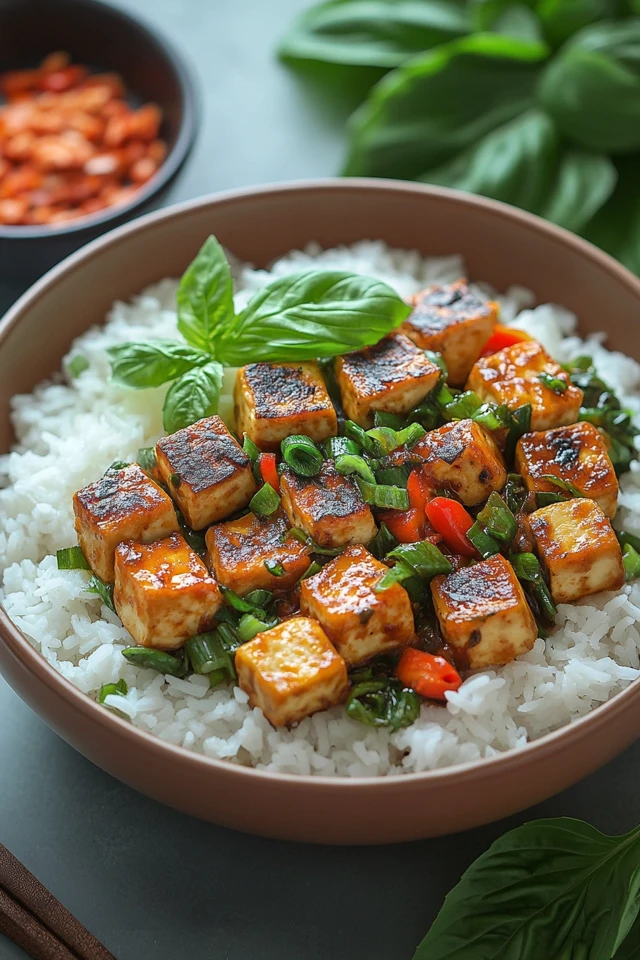
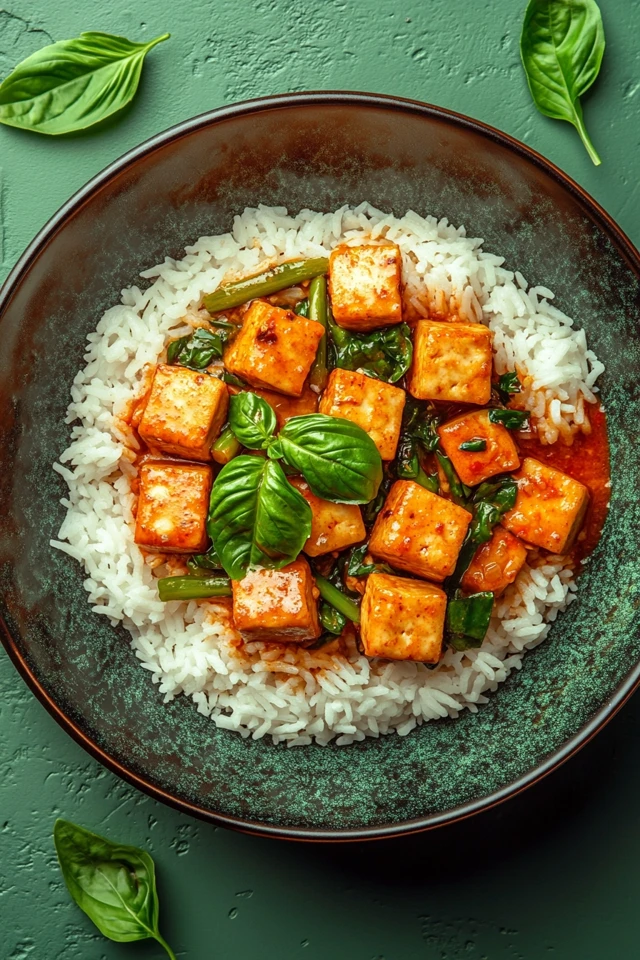
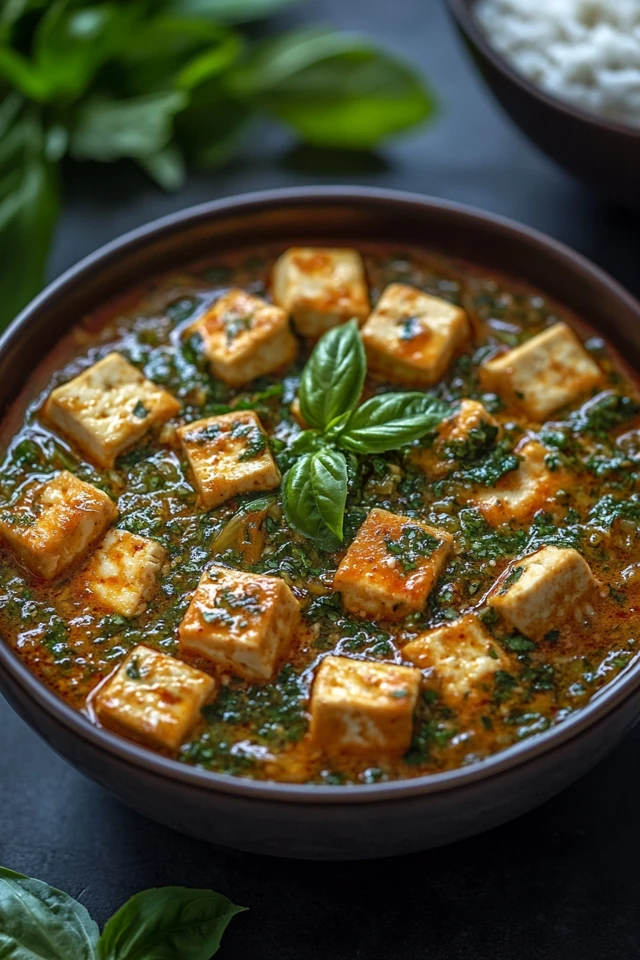
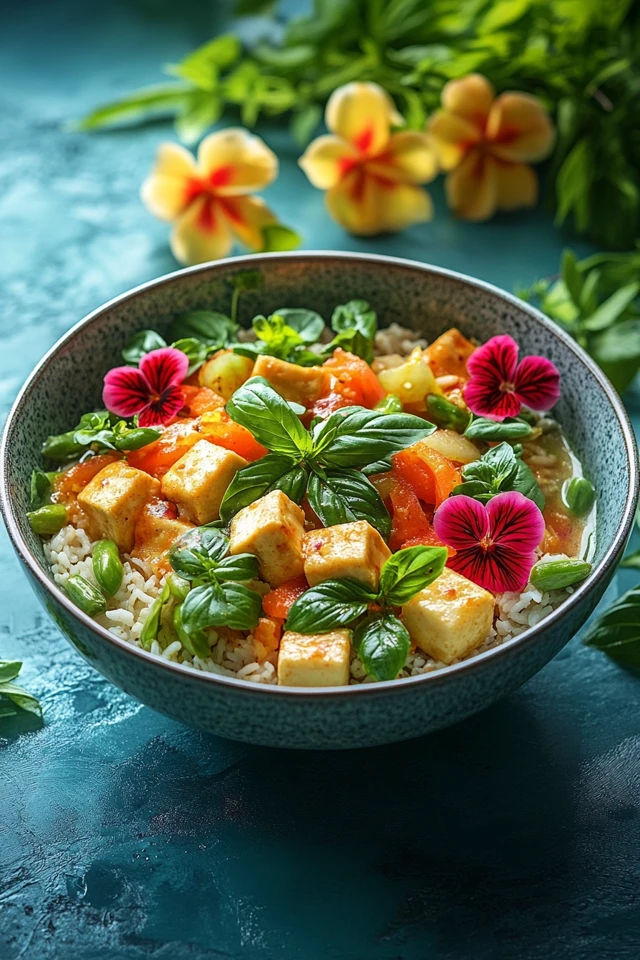
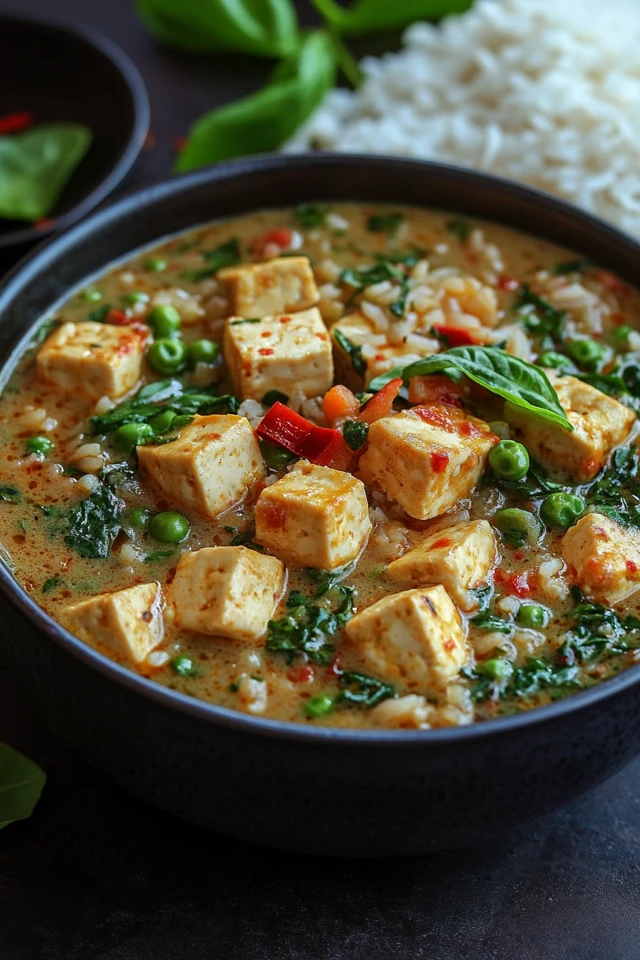
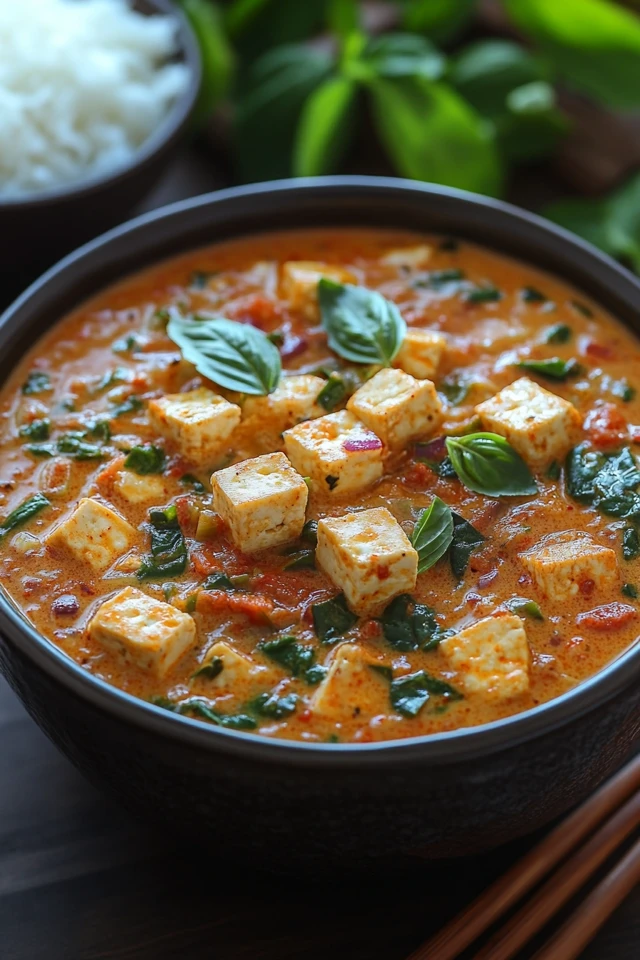
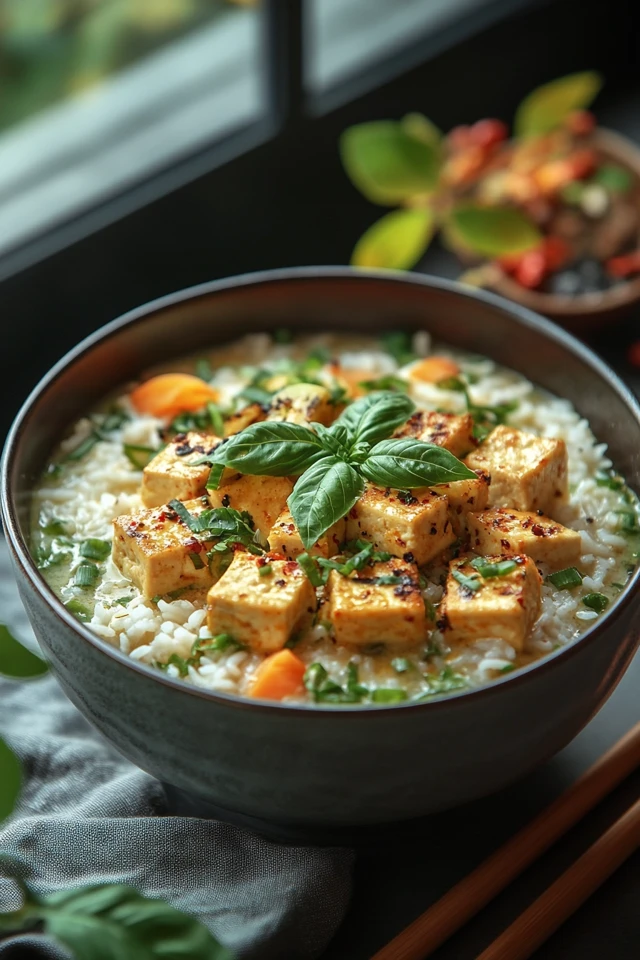
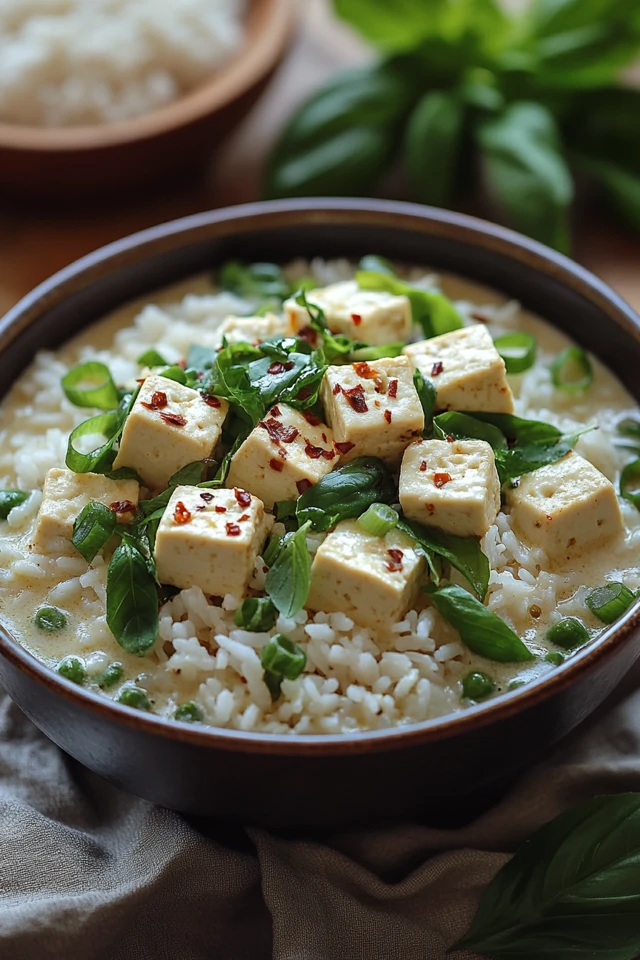
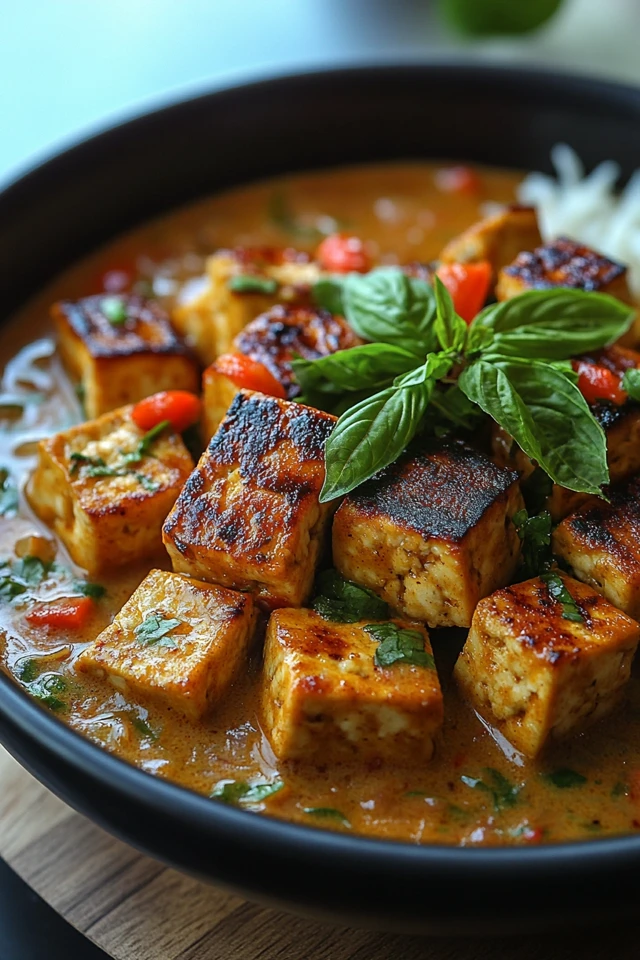
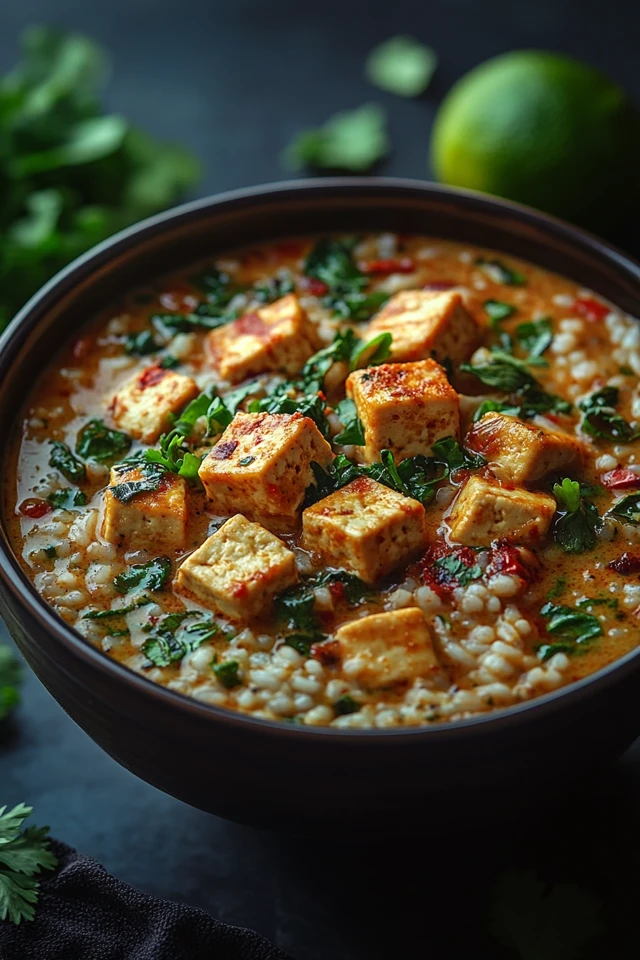
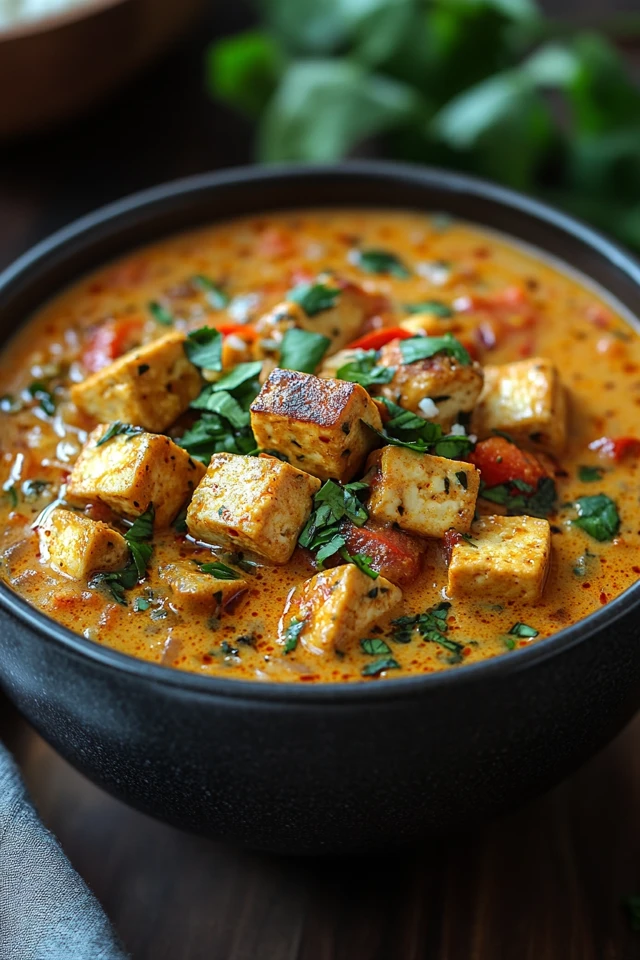
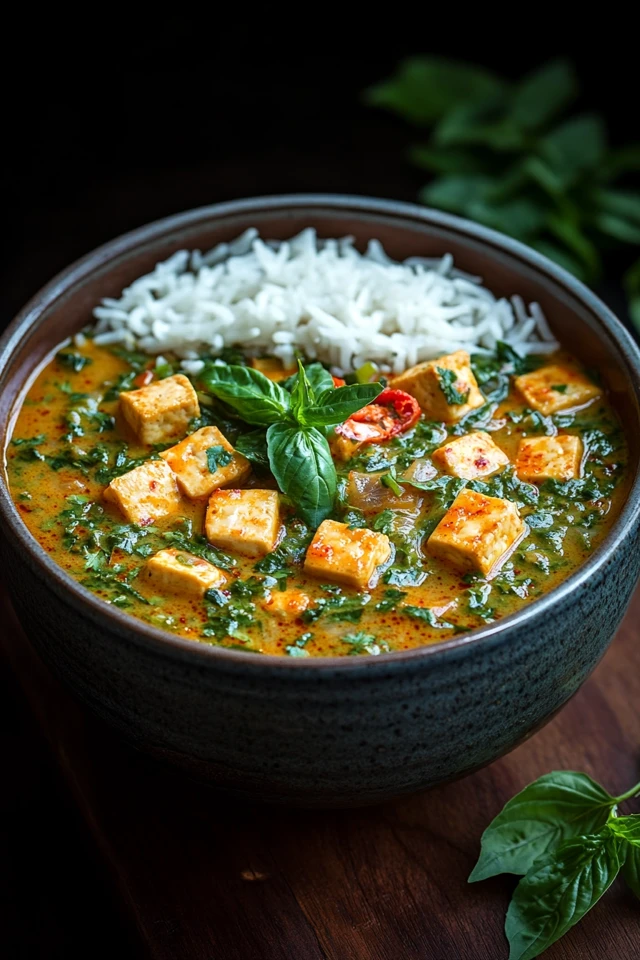
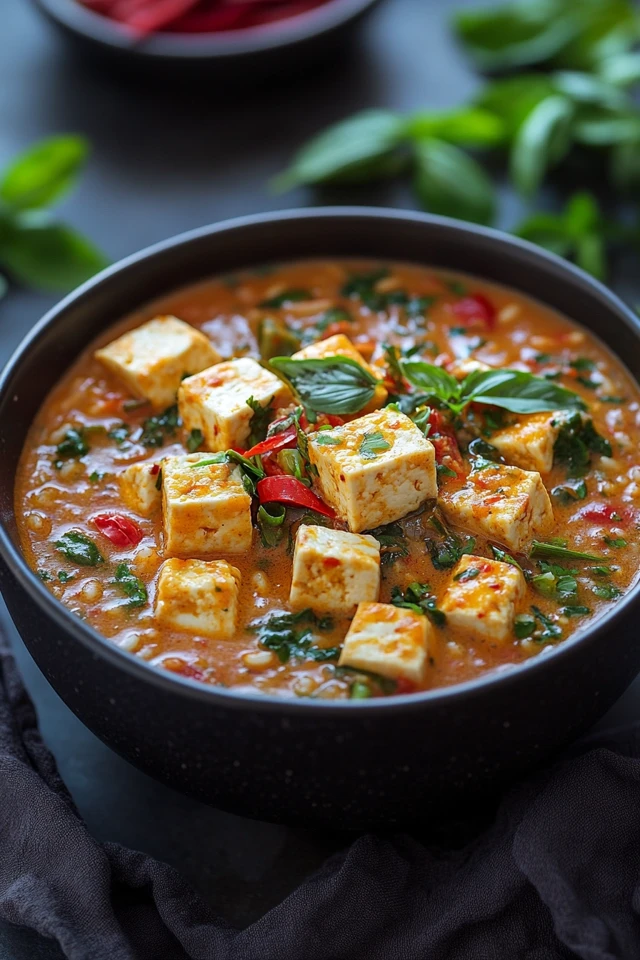
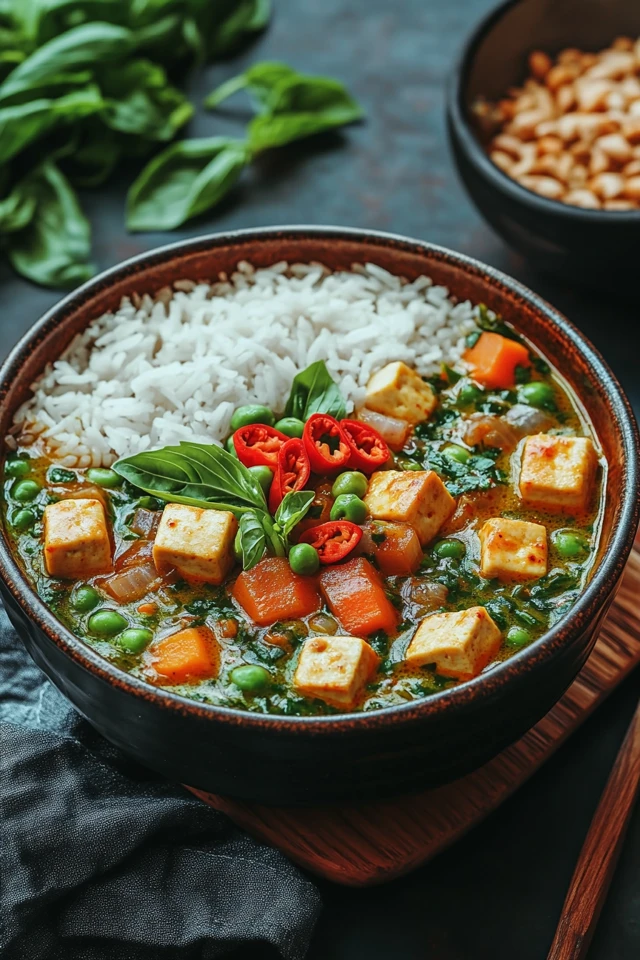
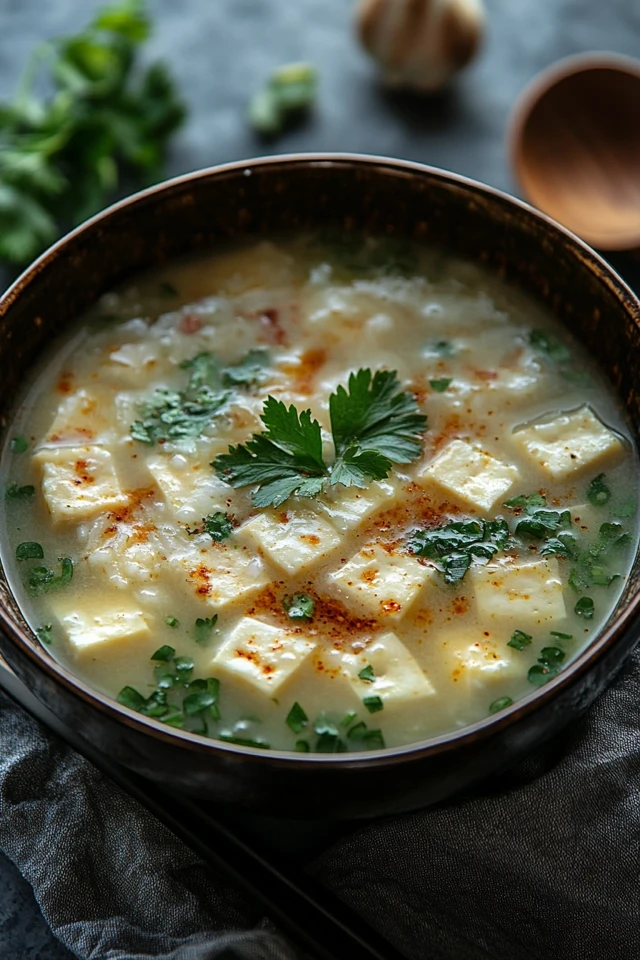
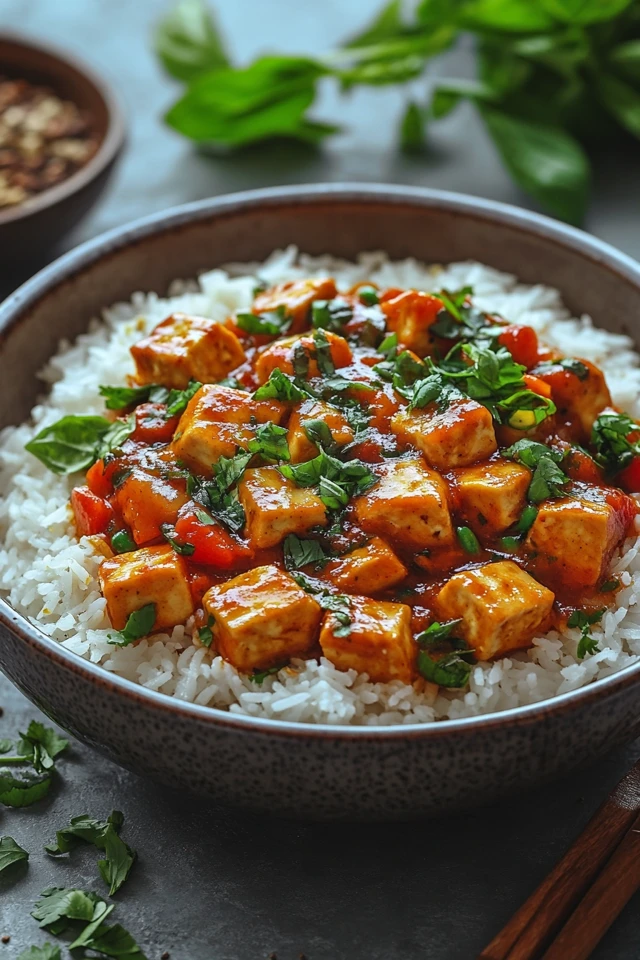
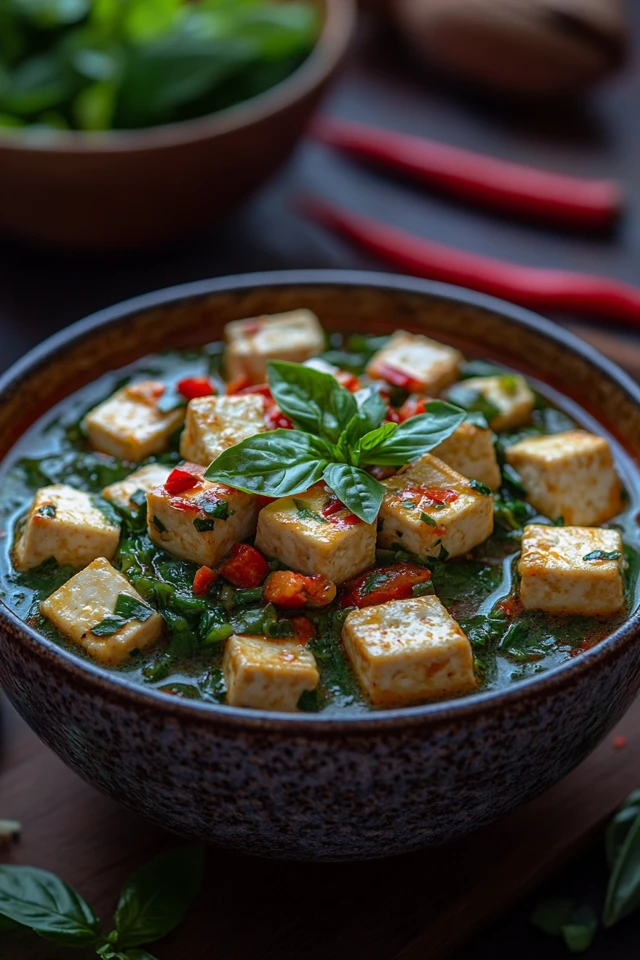
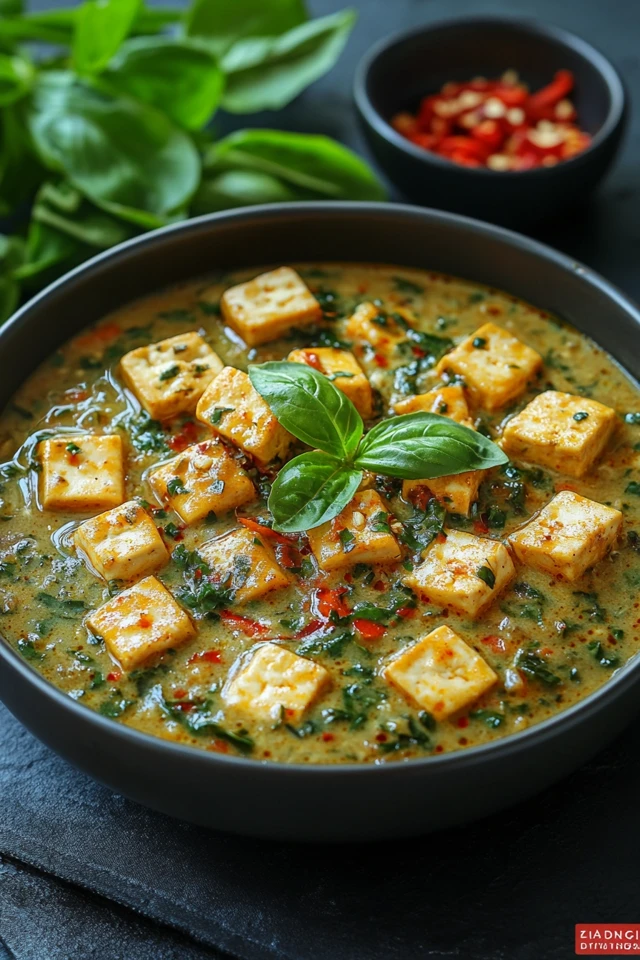
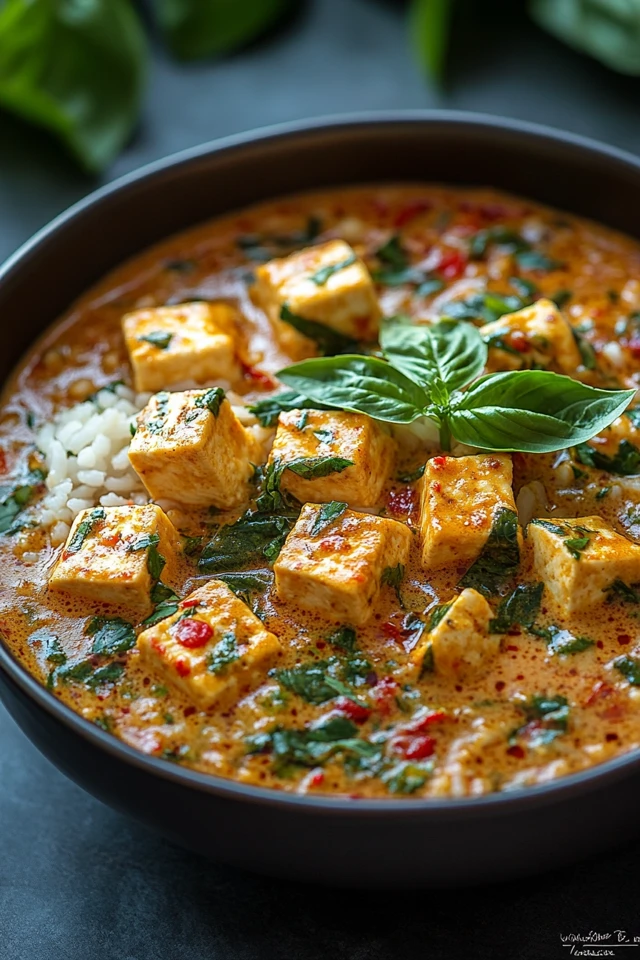
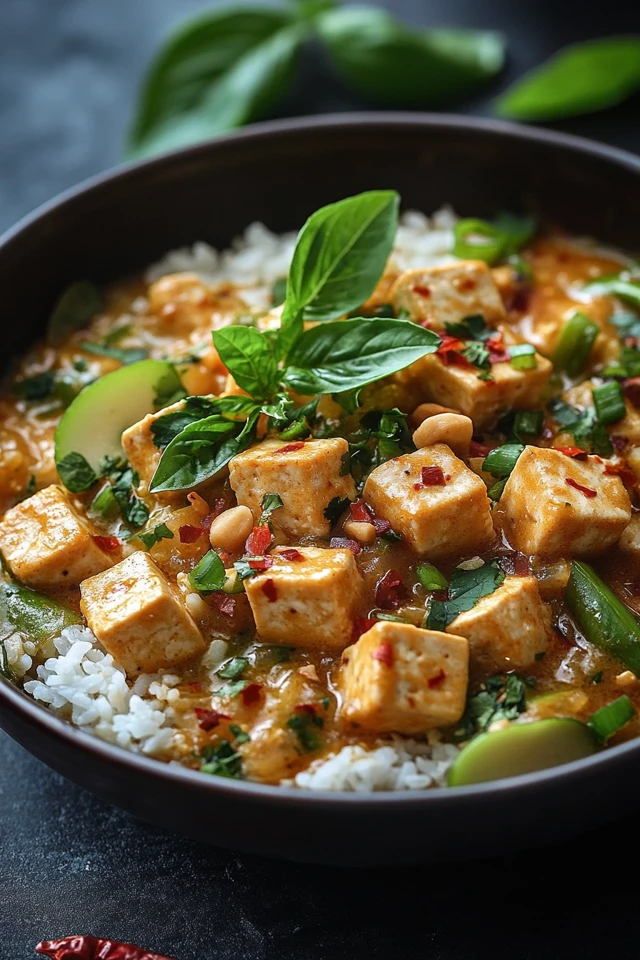
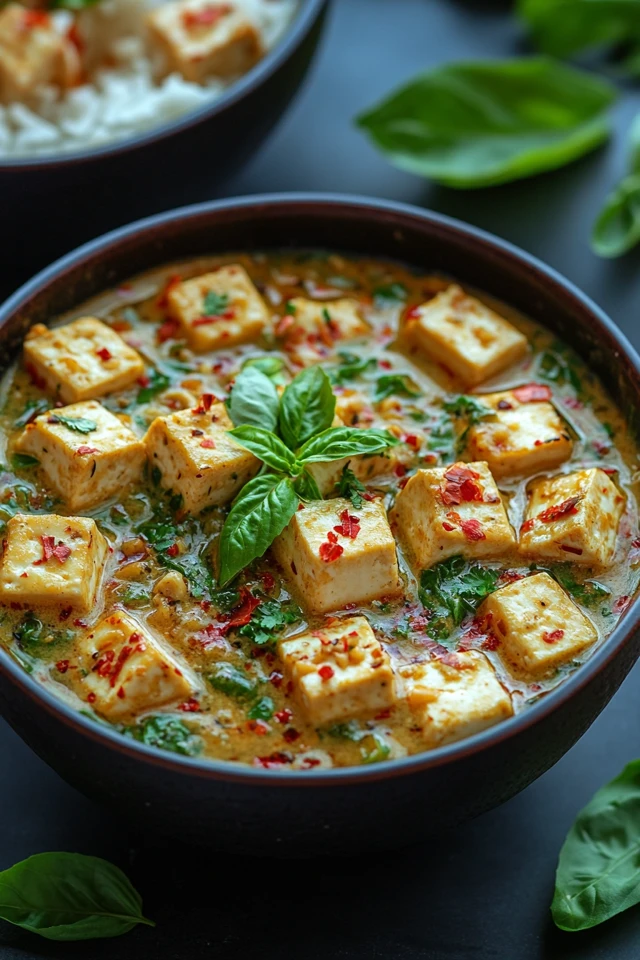
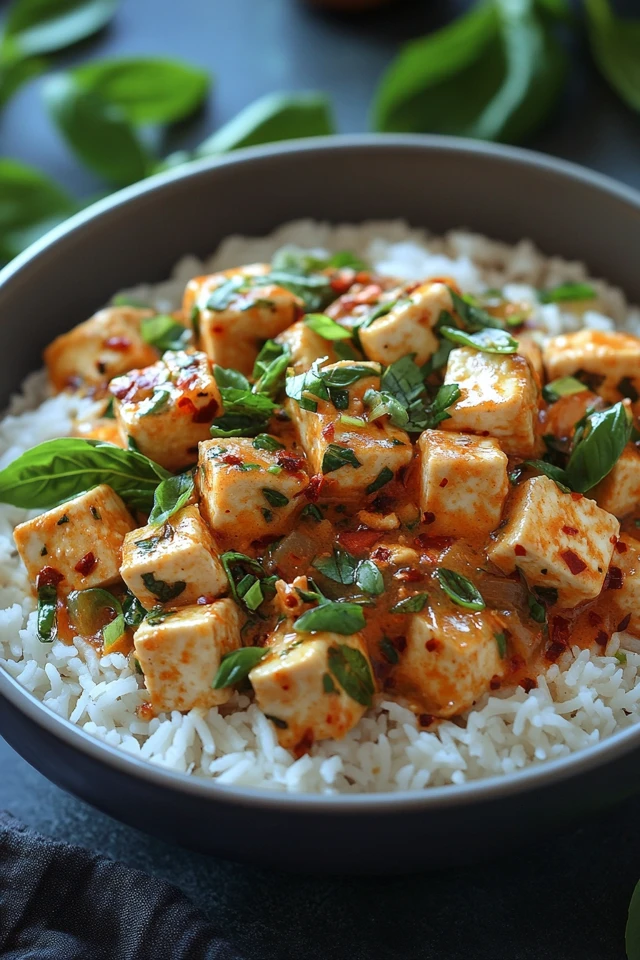
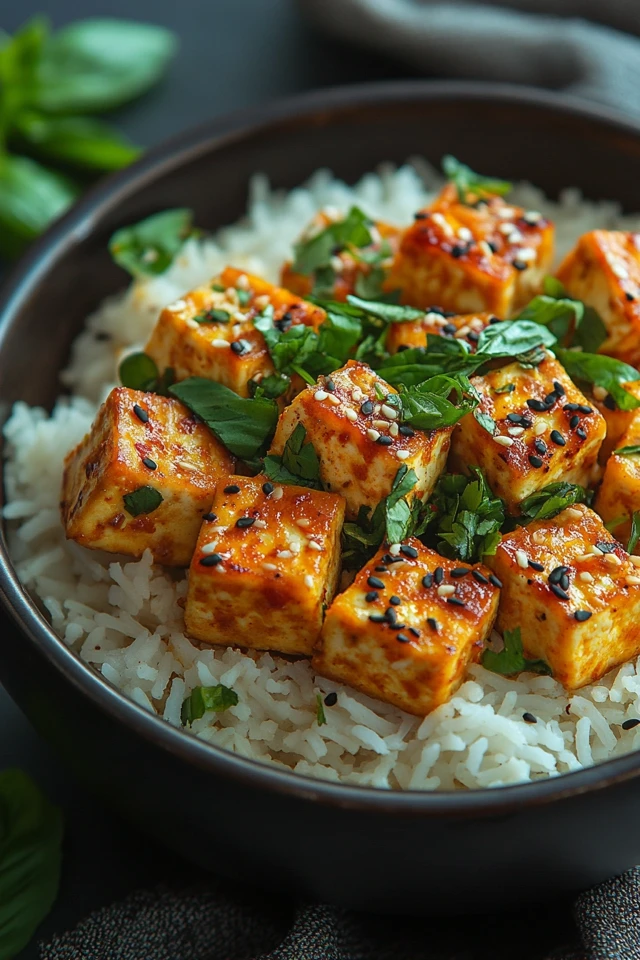
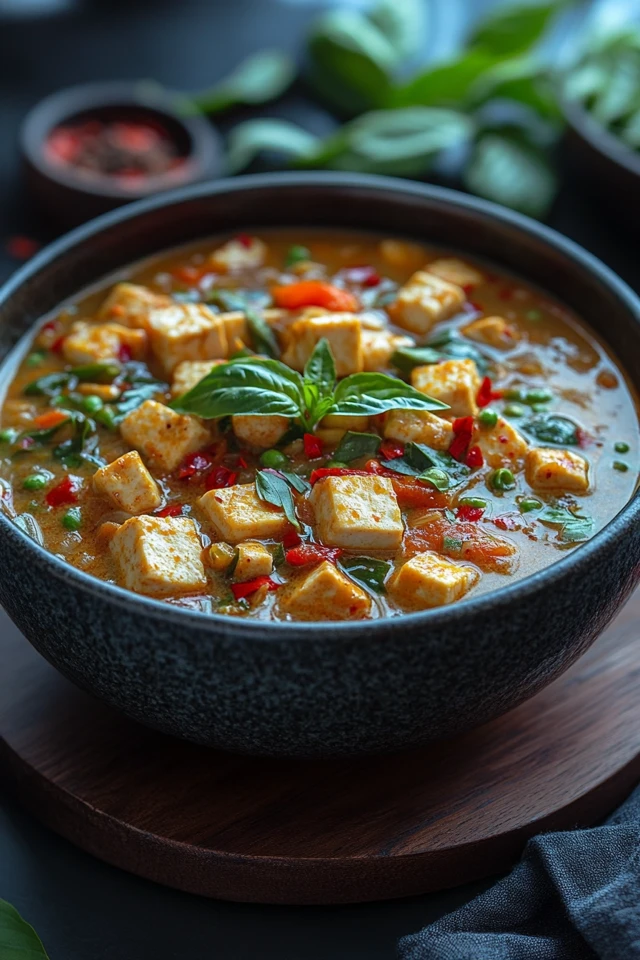
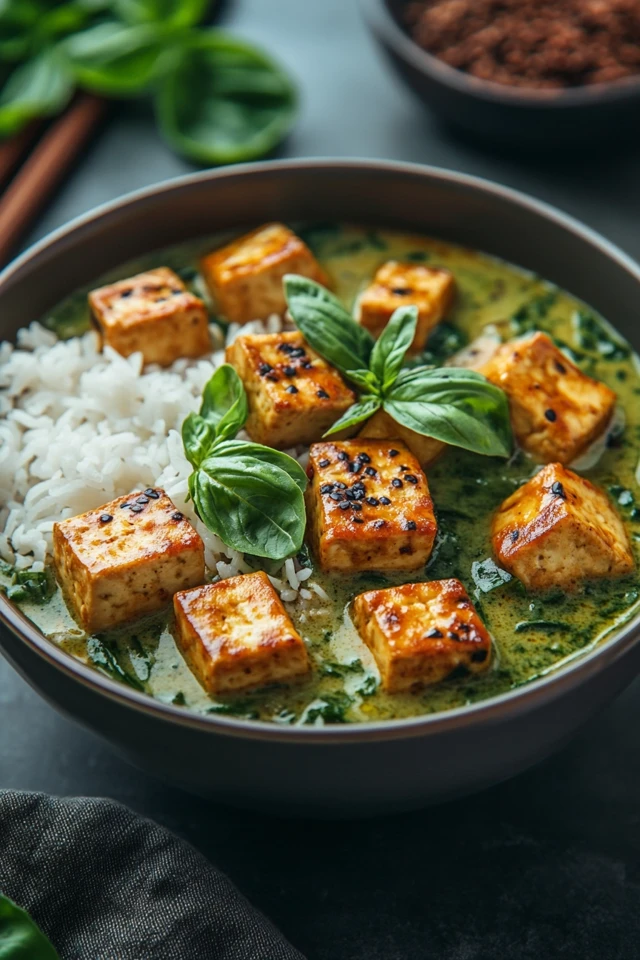
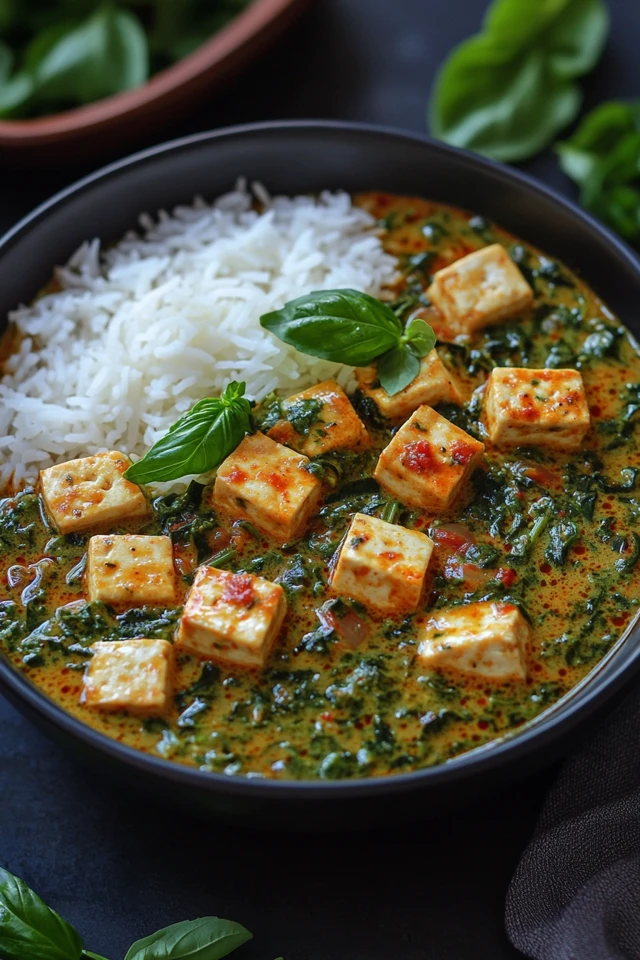
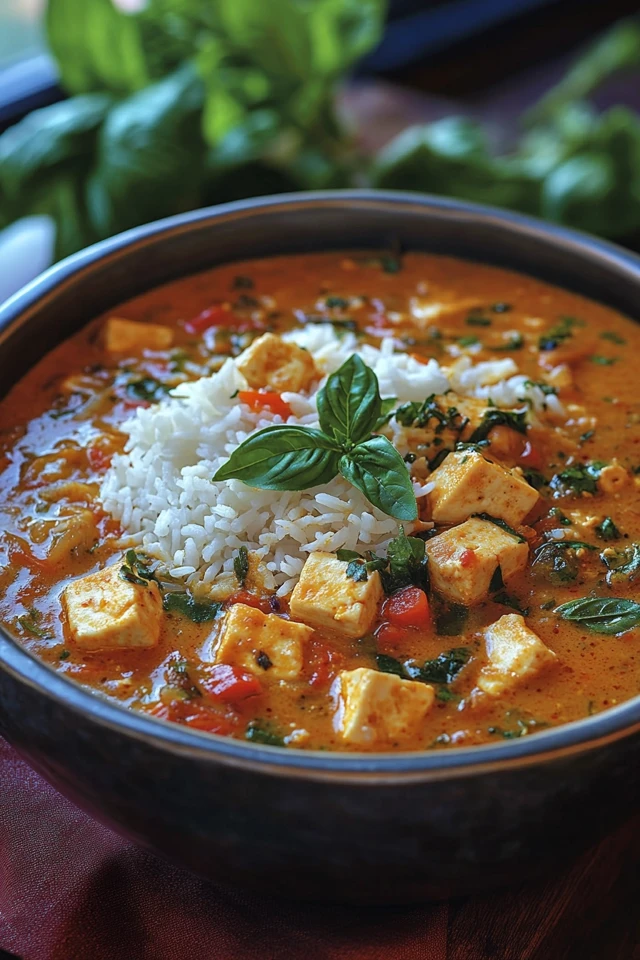
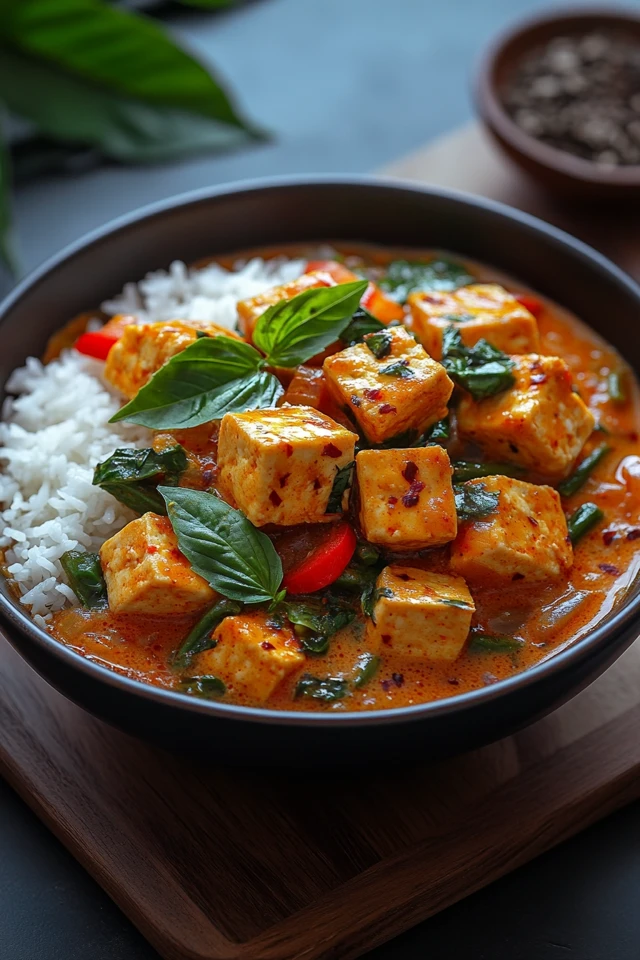
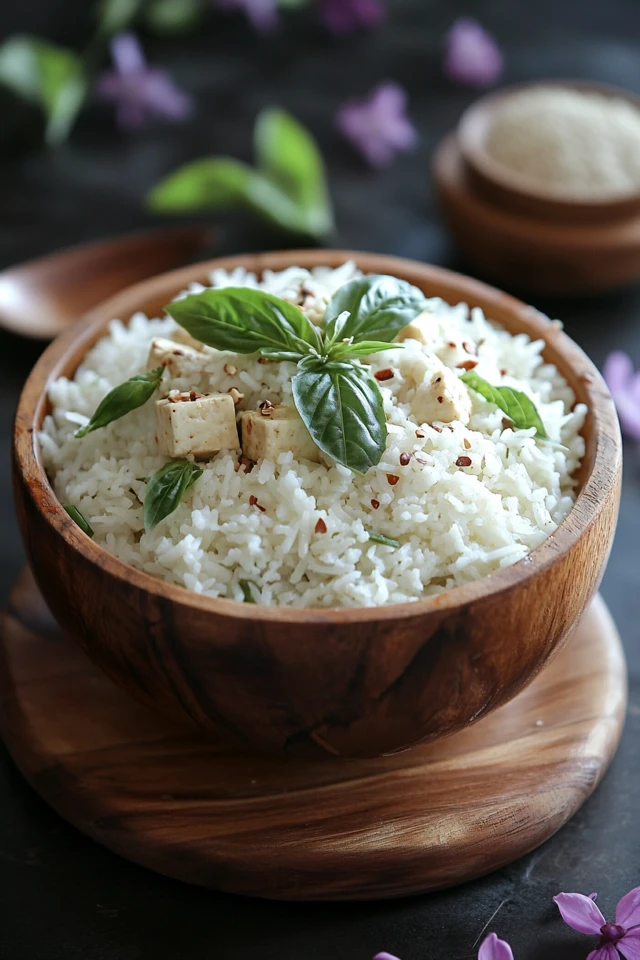
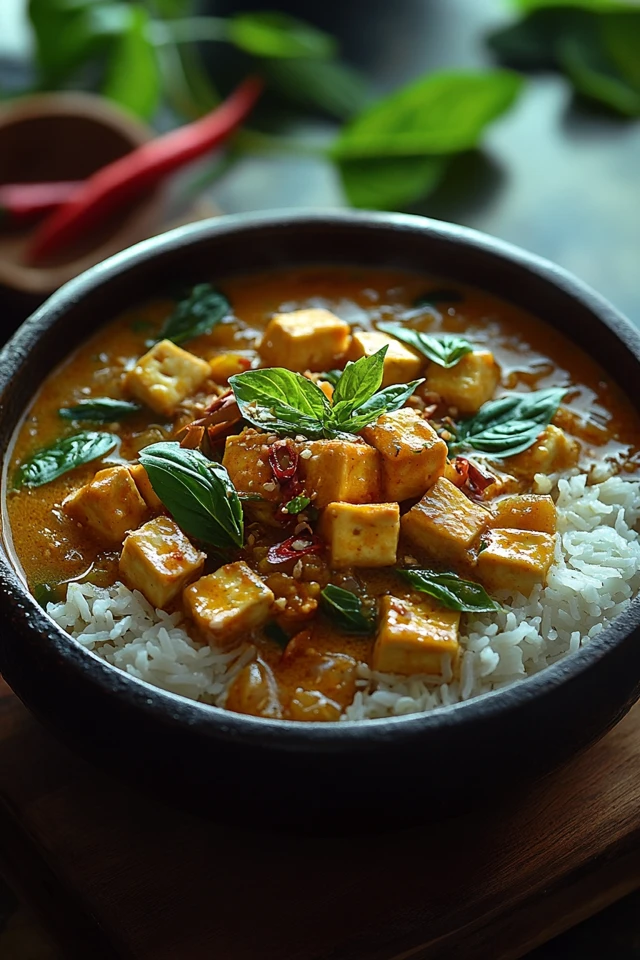
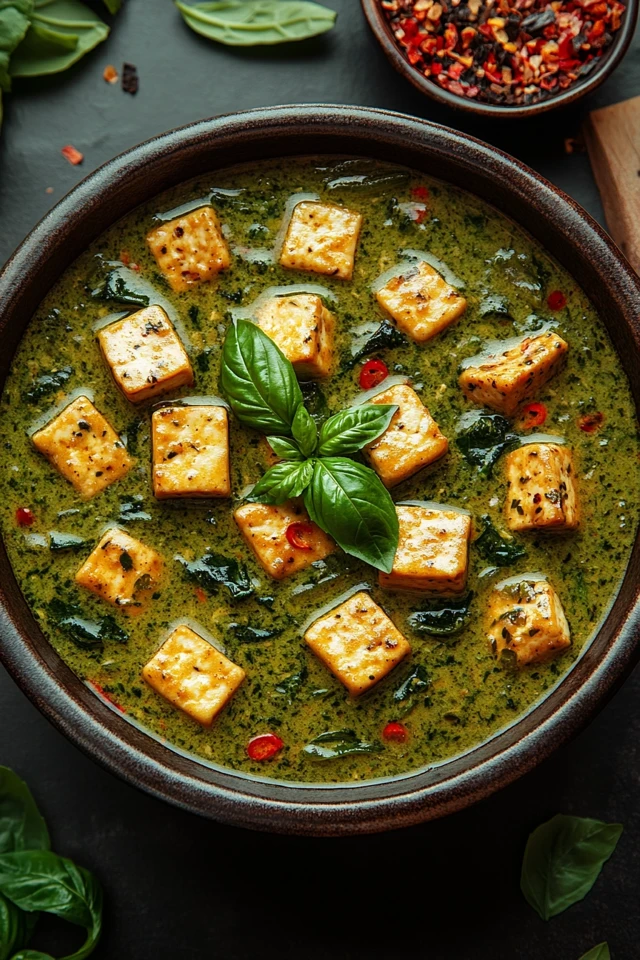
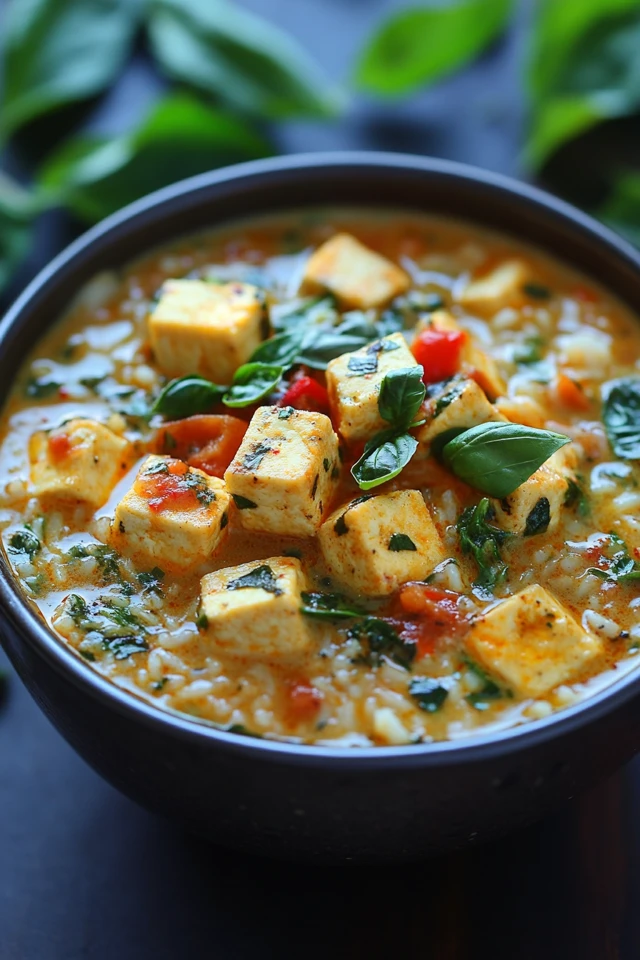
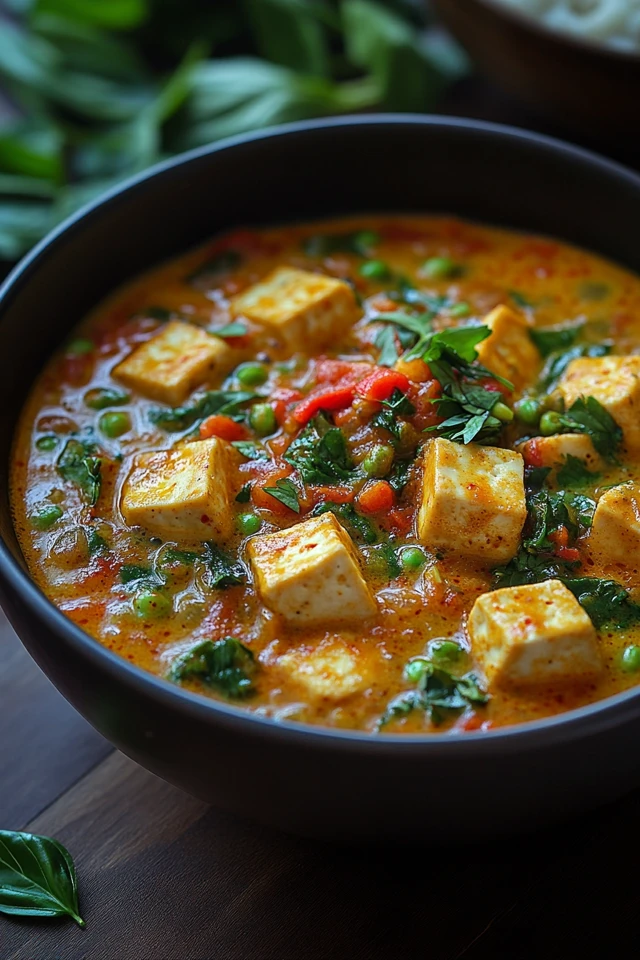
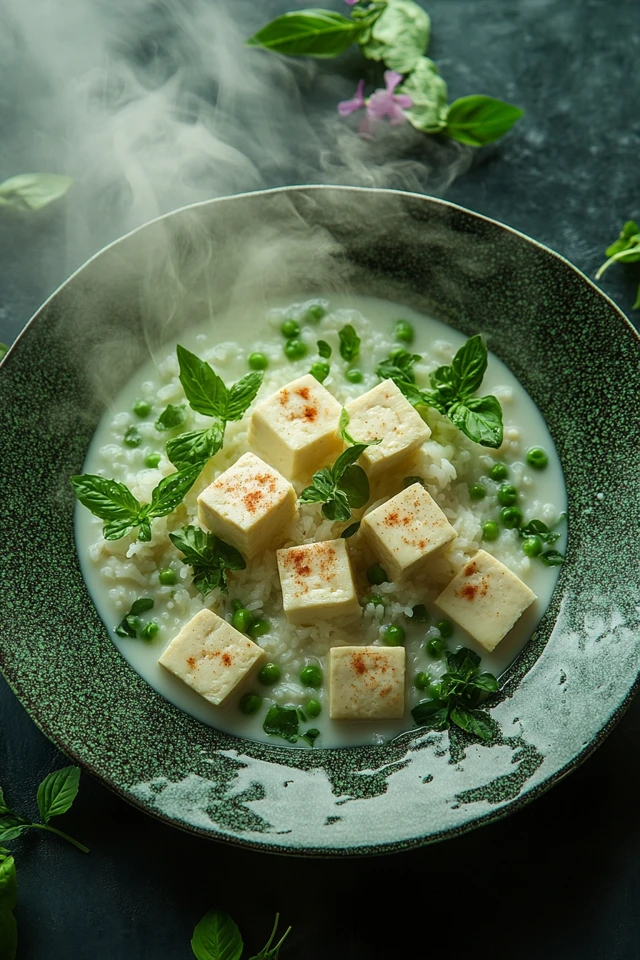

Frequently Asked Questions (FAQs)
1. Can I make this vegan Thai green curry ahead of time?
Absolutely! Vegan Thai Green Curry can be prepared a day ahead. Store it in an airtight container in the refrigerator. Reheat gently on the stovetop, adding a splash of water or vegetable broth if the curry has thickened too much.
2. How spicy is this green curry?
The spiciness of the curry can be adjusted based on your preference. Start with 3 tablespoons of green curry paste and add more if you prefer a spicier kick. Removing the seeds from fresh green chilies before adding them can also reduce the heat level.
3. Can I use different proteins instead of tofu?
Yes! You can substitute tofu with tempeh, seitan, or chickpeas for a different texture and flavor profile. Each alternative brings its unique benefits and can be incorporated seamlessly into the curry.
4. Is this recipe gluten-free?
Yes! By using tamari instead of regular soy sauce and ensuring that all other ingredients, including the green curry paste, are gluten-free, you can easily make this curry gluten-free. Always check labels to confirm the gluten-free status of store-bought products.
5. How can I thicken the curry if it’s too thin?
If your curry is too thin, you can thicken it by simmering it uncovered for a few more minutes to reduce the liquid. Alternatively, mix a teaspoon of cornstarch with two teaspoons of water to create a slurry and stir it into the curry, allowing it to thicken as it cooks.
6. Can I use homemade green curry paste?
Absolutely! Homemade green curry paste can enhance the freshness and flavor of the dish. Blend together ingredients like green chilies, garlic, ginger, lemongrass, shallots, cilantro stems, kaffir lime leaves, and spices to create a vibrant and aromatic paste.
7. What can I serve alongside this green curry?
Serve your Vegan Thai Green Curry with steamed jasmine or brown rice, quinoa, or rice noodles. Additionally, a side of fresh spring rolls or a crisp green salad can complement the meal beautifully.
8. Can I freeze the green curry?
Yes! Vegan Thai Green Curry freezes well. Allow the curry to cool completely, then transfer it to freezer-safe containers or bags. It can be frozen for up to 3 months. Thaw overnight in the refrigerator and reheat on the stovetop, adding a splash of water or broth if needed.
9. How do I store leftovers?
Store any leftover curry in an airtight container in the refrigerator for up to 4 days. Reheat it gently on the stovetop or in the microwave, stirring occasionally to ensure even heating.
10. Can I add fruits to the curry for a sweet twist?
Absolutely! Adding fruits like pineapple chunks or mango slices can introduce a sweet and tangy contrast to the spicy curry, creating a delightful balance of flavors.
About the Author
Welcome to Vegan & Plant-Based Kitchen! I’m Julio Arco, a passionate vegan chef dedicated to creating delicious, easy-to-make plant-based recipes that nourish both body and soul. Since embracing a vegan lifestyle in 2010, I’ve been on a culinary journey to explore the endless possibilities of plant-based cooking. From vibrant salads to hearty mains and indulgent desserts, my mission is to inspire and empower you to embrace a compassionate and healthy lifestyle through wholesome food.
Join me on this journey as we explore diverse flavors, experiment with fresh ingredients, and celebrate the beauty of plant-based living. Let’s create, share, and enjoy the goodness of vegan cooking together!
Disclaimer: This blog post is intended for informational purposes only. Always consult with a healthcare professional before making significant changes to your diet.

